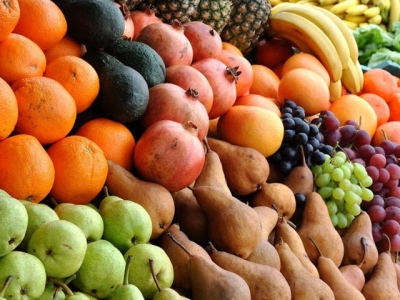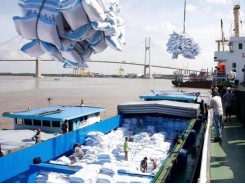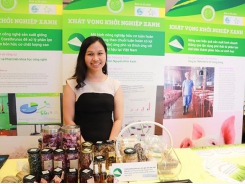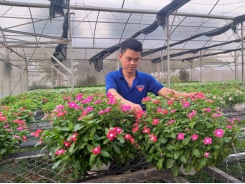Vietnams fruit and vegetables are confident to enter the EU market

The EU-Vietnam Free Trade Agreement (EVFTA) and the EU-Vietnam Investment Protection Agreement(EVIPA) and a series of government policies to promote agricultural processing have opened up a solution to remove difficulties for Vietnam's fruit and vegetable industry as well as opportunities to penetrate potential EU markets. Customs Newsspoke with Mr. Dang Phuc Nguyen, General Secretary of Vietnam Fruit and Vegetable Association, about these issues.
In the policy of restructuring the agricultural sector, developing agricultural processing production is defined as one of the two most important steps that need to be promoted to improve the quality, efficiency and competitiveness of agricultural products. For the fruit and vegetable industry, how have processing activities developed, sir?
- Vietnam's fruit and vegetable industry currently has only 150 industrial-scale processing establishments with a total designed capacity of 1 million tons of products per year. However,the utilization rate is only 56% due to lacking centralized raw material areas that meet the quality requirements, high costs due to small production, lack of capital and limited consumer market.
In recent years, there have been some bright spots in vegetable and fruit processing thanks to the large investment of corporations such as Vingroup, T&T, LaviFoods and Dong Giao with six modern processing plants with a capacity of 150,000 tons of products per year with an investment of more than VND5,300 billion.
However, the deep processing technology of the fruit and vegetable industry is weak in technology and small in scale and has not created many diversified products that appeal to consumers with strong brands. Investment in plants dedicated to preliminary processing, packaging, and preservation of vegetables and fruits has increasedinvested but not much andhas not met the needs, hygiene of plants, while equipment and tools are not guaranteed.
Meanwhile, the technology of deep processing of tropical fruits and vegetables of countries competing with Vietnam, such as Thailand, the Philippinesand Malaysia,is developed, reaching the world's high level with fresh, diversified and delicious products, eye-catching and convenient designs such as peeled coconut with straws, drinking water and fruit powder. The countries have also built strong world-famous brands such as Musang King durian of Malaysia andMong Thong of Thailand. In addition, countries have developed and acquired distribution systems around the world to easily export their products.
What is the solution to these problems, sir?
- Firstly, it is necessary to encourage and propagate to farmers all the urgent requirements to join cooperatives to set up large farms and to work together in transforming the thinking of safe vegetable and fruit production towards GAP to meet the requirements of export and processing markets.
Cooperatives will be more able to access unsecured loans, thereby investing in machinery and implementing comprehensive mechanization in production. Since then, the export enterprises and new processing plants can closely associate with the cooperatives and large farms to have more clean raw materials, meeting the standards for fresh and processed exports. At the same time, they can form strong brands.
Along with that, based on the climate and soil, it is necessary to re-plan the area of vegetables and fruits, giving priority to encouraging the development of fruits and vegetables with high stable consumption sources.
Vietnam's fruit and vegetable industry has just received good news about the Prime Minister's issuance of Directive 25/CT-TTg on a number of tasks and solutions for developing agro-forestry-fishery processing industry and mechanizing agricultural production and the National Assembly approved the EVFTA and the EVIPA. Howdo you think these two events will impact Vietnam's vegetable and fruit industry?
- This is really good news for Vietnam's fruit and vegetable industry. In particular, the Prime Minister's Directive 25 removesdifficulties of the agricultural processing industry, so this is expected to be a strong push to promote Vietnam's vegetable processing industry to develop with modern technology.
From there, it helps Vietnam vegetables and fruits to be preserved for longer, have more diverse products, and exploit more values. In particular, with the EVIPA, Vietnam will have the opportunity to attract investors to deep processing vegetables and fruits from Europe to improve the quality and value of products.
Meanwhile, the EVFTA opens a huge opportunity in the EU market, which is the largest import market in the world. Specifically, Vietnam can export any type of vegetable and fruit through the EU, as long as it is produced in Vietnam.
However, the EU is a very difficult market with strict technical regulations on residues of pesticides and banned substances. If violating, our products will be returned, causing damage not only to businesses but also to the Vietnamese fruit and vegetable industry. Therefore, safe production in the direction of GAP is a mandatory requirement. Another problem is that when production is "clean" in line with standards such as VietGAP or Global GAP, the rate of unsatisfactory vegetables and fruits will increase. Therefore, deep processing will help take advantage of these products as raw materials for processing, thereby maximizing the value of the harvested products, helping farmers to increase theirincomes.
In general, with the EVFTA, EVIPA and the Government's determination in developing agricultural processing production, it can be said that the opportunities are great, and difficulties have been resolved. The rest is the action of farmers and businesses. Bycreatingproducts meeting internationalstandards, Vietnamese vegetables and fruits will “take off” vigorously in the future.
With a series of such favorable conditions, what do you think about theexport prospects ofVietnam's vegetables and fruit in the future?
- In the first five months of 2020, Vietnam's fruit and vegetable exports were US$1.5 billion, down by 15 percent compared to the same period in 2019. Of which, the export to Chinese market witnessed the largest decline, up to 30 percent.
Currently, China still accounts for 60 percent of Vietnam's fruit and vegetable export market. So, in the past five months, although other markets such as the US, Japan, Thailand, and South Korea increased imports, it isnot enough to compensatefor the decline of the Chinese market. Although Vietnam has implemented many measures to promote fruit and vegetable exports to China, the recovery isforecast to be slow.
Meanwhile other markets have high growth rates, the proportion is still low.
Therefore, by the end of this year, Vietnam's vegetable and fruit export turnover may still decline by about 10 percent compared to 2019.
However, with a very small proportion at this moment, the EU market has a huge growth potential for Vietnamese vegetables and fruits in the future. Vegetables and fruits of Vietnam also have great opportunities in member markets of the CPTPP.
Therefore, in the long term, Vietnam's fruit and vegetable exports will have a high and sustainable breakthrough in new markets, instead of relying heavily on China as it is today.
Thank you, sir!
Related news
Tools

Phối trộn thức ăn chăn nuôi

Pha dung dịch thủy canh

Định mức cho tôm ăn

Phối trộn phân bón NPK

Xác định tỷ lệ tôm sống

Chuyển đổi đơn vị phân bón

Xác định công suất sục khí

Chuyển đổi đơn vị tôm

Tính diện tích nhà kính

Tính thể tích ao



 Farm produce face hurdles to make inroads into…
Farm produce face hurdles to make inroads into…  Agriculturalist pushes hi-tech farming in Vietnam to limits
Agriculturalist pushes hi-tech farming in Vietnam to limits